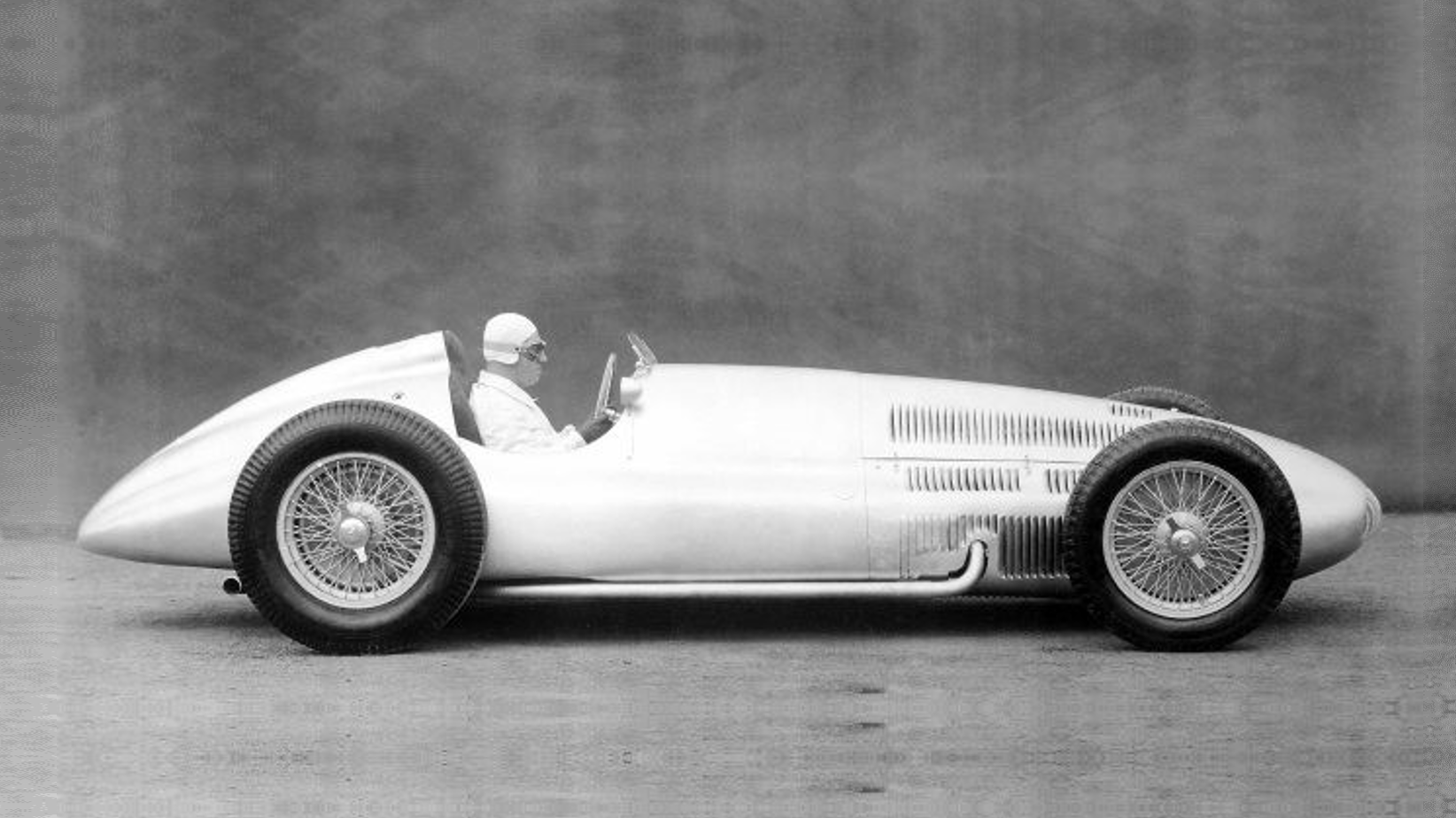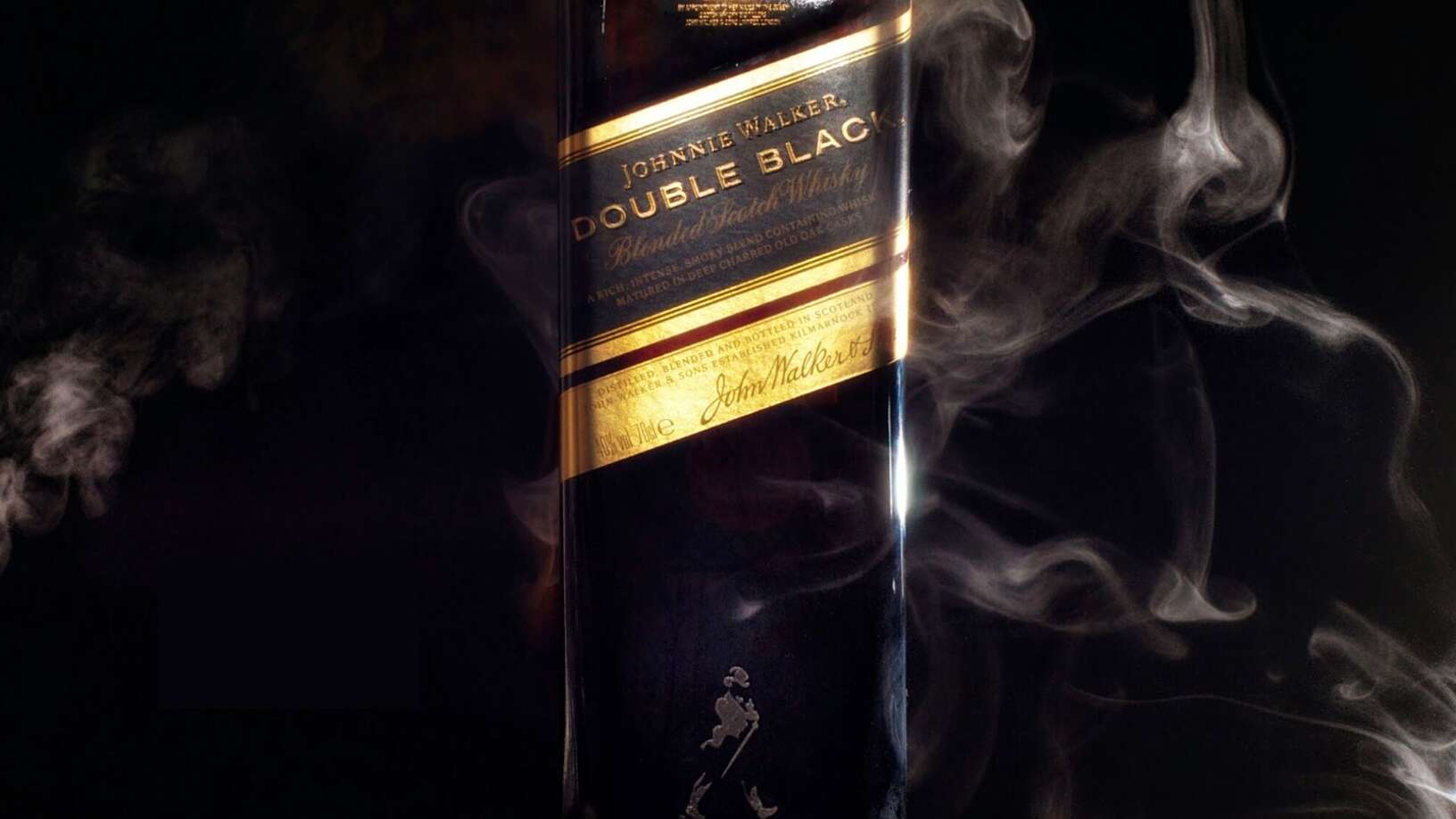CX GRAND CRU
SURPRISING FLAVOURS BY ADDING OFF-BEAT IDEAS DURING BREWING
LONG READ
CX, SILVER AND DOUBLE BLACK
HOW WELL-CHOSEN NAMES BRING IN CROWDS
A well-chosen name is priceless. It can give the sense of energy, ambition and help you create a stir. It can take you to the moon and back. Let’s put it like this: did you ever think of your initiatives as something that is exquisite, delicate and to be savoured? Probably not. But let’s start doing so today.
Consider the name W154 for a moment. It’s a puzzling name, right? At the very least it’s a functional name. Now, attach the name Mercedes-Benz to it and it will spark some curiosity. Still, it can be anything from some boring engine part to a read-out of a metric of some sorts. Now, see what happens when I now tell you the nickname for the W154 and all Mercedes’ racing cars: the “Silver Arrow”. All of a sudden a world opens up and your imagination takes off. In fact, the W154 is Mercedes-Benz’ very successful 1938 Grand Prix racing car designed by Rudolf Uhlenhaut, the head of Mercedes’ Racing in the days as described in the wonderful 1843 magazine of The Economist. It is a remarkable feat of aerodynamics, balance and speed (reaching a stunning 185mph) and set in an amazing design. Driver and European Champion Rudolf Caracciola liked it as ‘it was a car that needed finesse rather than force to handle.’
The nickname ‘Silver Arrow’ is perfect. So well chosen as it does not only reflect its features, but as well what it’s capable of achieving. It’s a sense of energy, ambition, force. It’s a promise.
I got chastised by a friend for using the English translation of the actual original German name “Silberpfeile”. It’s a mythical name. A name that is savoured. And indeed that friend tried to describe the importance of it, including that gesture you make when describing something almost intangible: thumb and fingers delicately pressed together and held up as if you’re describing that exquisite dish you recently had and you’re contemplating ways to describe it.
Now. Imagine someone is doing that whilst talking about your programme.
Chances are this struck you dumbfounded. But consider why it would be such a stretch of the imagination. Why would it be so impossible to have colleagues in your organisation talk about your initiative that way? I am a firm believer that this is something that should be your ambition. Because your programme will be better in its setup and approach. Because it will gain a bigger following in your organisation, and therefore more and better results. Because it challenges you to think bigger and be more ambitious. And all of that starts by giving it a name. A good name.
Let’s start with some pseudo-statistics. I estimate 99% of company programmes do not have a name (yes, I made up that percentage). Let’s be clear. A programme should not be a description. It should not be a functional summary of the activities you do. That is the equivalent of the W154. Attaching a name to it can help you signify or evoke a feeling or emotion that instantly shows people what you’re after.
You want to be about ‘finesse rather than force’? Give it the right name then.
Consider for instance calling your programme ‘‘Heartbeat’. It has the connotation of listening to customers or employees, finding their pulse, aiming for their hearts… and it opens up a whole array of possibilities to show your organisation what it is that you’re after. It opens up loads of possibilities for programme visuals and sparks new initiatives that fit this theme, including actually visiting a hospital and learning how they treat patients and then challenge the participants to apply those learnings to what you’re trying to achieve. And there are many, many other names to consider. Each with its own specific vibe, idea and promise.
Looking for names shouldn’t be confined to the overall programme. It can be used for any of your initiatives in it. What’s stopping you from calling your workshop a ‘Bootcamp’. Notice how immediately it gives off a wholly different vibe and sets other expectations? It most certainly will draw in a different crowd. Or start calling your report a ‘Compass’, the essential guide for the organisation on route to their destination i.e. strategy. You can easily see the visual as a logo, perhaps combined with some wild waters, mountain peaks or any other metaphorical hardship to overcome in your quest for customer centricity. It sets the stage to focus on the journey, rather than the ‘scores-only’ focus.
Or as yet another example, what about calling a training course the ‘Black Label’ training. How cool is that? Imagine the visuals you can use, take your inspiration from the Johnnie Walker label that is pitch black with gold lines. Even better, as Johnnie Walker upped their game as well by introducing the ‘Double Black’. You name your training that and guaranteed it will cause a stir, people wanting to know more about it and eager to sign up. No, not to sign up. Rather to ‘be a part of it’.
And now you’ve created something that transcends the actual, functional content of the training. It’s a thing, a movement, something extraordinary.
Of course you have to make sure to apply this thinking to the content of the training as well. It should match the promise you made, just as any content should reflect what it says on the wrapper. But giving an apt name, a name that evokes a feeling or some image, is the way to start this whole process. For you yourself as well as the organisation.
Easier said then done you might say. Where do I find names like that? Well, all around you. Just take notice of some remarkable, funny, interesting, awful, gritty or poetic names. Maybe it’s something you just suddenly notice on the label of an exclusive beer that is served (that’s where I got the ‘Grand Cru’ idea from, using it for the title and subtitle of this blog). Maybe you hear it in a name of a song, or you see an advert for a watch or a car (for example, the name ‘Phantom’ for the Rolls-Royce series is brilliant and for some time has sparked my imagination what to use it for). You see, anything goes. But for now, from the many examples, let’s go for bottles this time.
Wait… what? Yes, bottles. Some time ago I stumbled on an apparent tradition to give bottles a name to indicate their size. And oh, what beautiful names they are. Manufacturers of champagne offer a ‘Magnum’ containing 1,5l which is equal to 2 regular bottles. Most of us will know that. But, it turns out there is a whole range of bottles increasing in size that comes after, and with equally increasing fantastic names. What about the ‘Jeróboam’ (equal to 4 bottles), the ‘Salmanazar’ (equal to 12 bottles), the ‘Nebuchadnezzar’ (equal to 20 bottles) and the biggest one of all containing a stunning 30 liters of champagne or the volume of 40 bottles, is called ‘Melchizedek’ or sometimes the ‘Midas’. Awesome.
Most of us will have some vague memory of King Midas turning everything he touches in gold. And it’s this image of over-the-top riches and grandeur that is so befitting for the huge bottle of champagne, the biggest and most daunting one of them all. Just awesome.
Can you imagine your internal annual report be called like that, or the final workshop of a series?
So what’s the lesson here? A well-chosen name foregoes the mere function and evokes more than just the content. It is an incredible card to play. And one that you can do too. Just be alert for names you hear, and don’t be afraid to use them for your own programme or initiatives. It’s so worth it.
LONG READ
CX, SILVER AND DOUBLE BLACK
HOW WELL-CHOSEN NAMES BRING IN CROWDS
A well-chosen name is priceless. It can give the sense of energy, ambition and help you create a stir. It can take you to the moon and back. Let’s put it like this: did you ever think of your initiatives as something that is exquisite, delicate and to be savoured? Probably not. But let’s start doing so today.
Consider the name W154 for a moment. It’s a puzzling name, right? At the very least it’s a functional name. Now, attach the name Mercedes-Benz to it and it will spark some curiosity. Still, it can be anything from some boring engine part to a read-out of a metric of some sorts. Now, see what happens when I now tell you the nickname for the W154 and all Mercedes’ racing cars: the “Silver Arrow”. All of a sudden a world opens up and your imagination takes off. In fact, the W154 is Mercedes-Benz’ very successful 1938 Grand Prix racing car designed by Rudolf Uhlenhaut, the head of Mercedes’ Racing in the days as described in the wonderful 1843 magazine of The Economist. It is a remarkable feat of aerodynamics, balance and speed (reaching a stunning 185mph) and set in an amazing design. Driver and European Champion Rudolf Caracciola liked it as ‘it was a car that needed finesse rather than force to handle.’
The nickname ‘Silver Arrow’ is perfect. So well chosen as it does not only reflect its features, but as well what it’s capable of achieving. It’s a sense of energy, ambition, force. It’s a promise.
I got chastised by a friend for using the English translation of the actual original German name “Silberpfeile”. It’s a mythical name. A name that is savoured. And indeed that friend tried to describe the importance of it, including that gesture you make when describing something almost intangible: thumb and fingers delicately pressed together and held up as if you’re describing that exquisite dish you recently had and you’re contemplating ways to describe it.
Now. Imagine someone is doing that whilst talking about your CX Programme.
Chances are this struck you dumbfounded. But consider why it would be such a stretch of the imagination. Why would it be so impossible to have colleagues in your organisation talk about your initiative that way? I am a firm believer that this is something that should be your ambition. Because your programme will be better in its setup and approach. Because it will gain a bigger following in your organisation, and therefore more and better results. Because it challenges you to think bigger and be more ambitious. And all of that starts by giving it a name. A good name.
Let’s start with some pseudo-statistics. I estimate 99% of CX programmes do not have a name (yes, I made up that percentage). Let’s be clear. A CX programme should not be a description. It should not be a functional summary of the activities you do. That is the equivalent of the W154. Attaching a name to it can help you signify or evoke a feeling or emotion that instantly shows people what you’re after.
You want to be about ‘finesse rather than force’? Give it the right name then.
Consider for instance calling your programme ‘‘Heartbeat’. It has the connotation of listening to customers, finding their pulse, aiming for their hearts… and it opens up a whole array of possibilities to show your organisation what it is that you’re after. It opens up loads of possibilities for programme visuals and sparks new initiatives that fit this theme, including actually visiting a hospital and learning how they treat patients and then challenge the participants to apply those learnings to what you’re trying to achieve. And there are many, many other names to consider. Each with its own specific vibe, idea and promise.
Looking for names shouldn’t be confined to the overall programme. It can be used for any of your initiatives in it. What’s stopping you from calling your workshop a ‘Bootcamp’. Notice how immediately it gives off a wholly different vibe and sets other expectations? It most certainly will draw in a different crowd. Or start calling your report a ‘Compass’, the essential guide for the organisation on route to their destination i.e. strategy. You can easily see the visual as a logo, perhaps combined with some wild waters, mountain peaks or any other metaphorical hardship to overcome in your quest for customer centricity. It sets the stage to focus on the journey, rather than the ‘scores-only’ focus.
Or as yet another example, what about calling a training course the ‘Black Label’ training. How cool is that? Imagine the visuals you can use, take your inspiration from the Johnnie Walker label that is pitch black with gold lines. Even better, as Johnnie Walker upped their game as well by introducing the ‘Double Black’. You name your training that and guaranteed it will cause a stir, people wanting to know more about it and eager to sign up. No, not to sign up. Rather to ‘be a part of it’.
And now you’ve created something that transcends the actual, functional content of the training. It’s a thing, a movement, something extraordinary.
Of course you have to make sure to apply this thinking to the content of the training as well. It should match the promise you made, just as any content should reflect what it says on the wrapper. But giving an apt name, a name that evokes a feeling or some image, is the way to start this whole process. For you yourself as well as the organisation.
Easier said then done you might say. Where do I find names like that? Well, all around you. Just take notice of some remarkable, funny, interesting, awful, gritty or poetic names. Maybe it’s something you just suddenly notice on the label of an exclusive beer that is served (that’s where I got the ‘Grand Cru’ idea from, using it for the title and subtitle of this blog). Maybe you hear it in a name of a song, or you see an advert for a watch or a car (for example, the name ‘Phantom’ for the Rolls-Royce series is brilliant and for some time has sparked my imagination what to use it for). You see, anything goes. But for now, from the many examples, let’s go for bottles this time.
Wait… what? Yes, bottles. Some time ago I stumbled on an apparent tradition to give bottles a name to indicate their size. And oh, what beautiful names they are. Manufacturers of champagne offer a ‘Magnum’ containing 1,5l which is equal to 2 regular bottles. Most of us will know that. But, it turns out there is a whole range of bottles increasing in size that comes after, and with equally increasing fantastic names. What about the ‘Jeróboam’ (equal to 4 bottles), the ‘Salmanazar’ (equal to 12 bottles), the ‘Nebuchadnezzar’ (equal to 20 bottles) and the biggest one of all containing a stunning 30 liters of champagne or the volume of 40 bottles, is called ‘Melchizedek’ or sometimes the ‘Midas’. Awesome.
Most of us will have some vague memory of King Midas turning everything he touches in gold. And it’s this image of over-the-top riches and grandeur that is so befitting for the huge bottle of champagne, the biggest and most daunting one of them all. Just awesome.
Can you imagine your internal annual CX report be called like that, or the final workshop of a series?
So what’s the lesson here? A well-chosen name foregoes the mere function and evokes more than just the content. It is an incredible card to play. And one that you can do too. Just be alert for names you hear, and don’t be afraid to use them for your own programme or initiatives. It’s so worth it.



